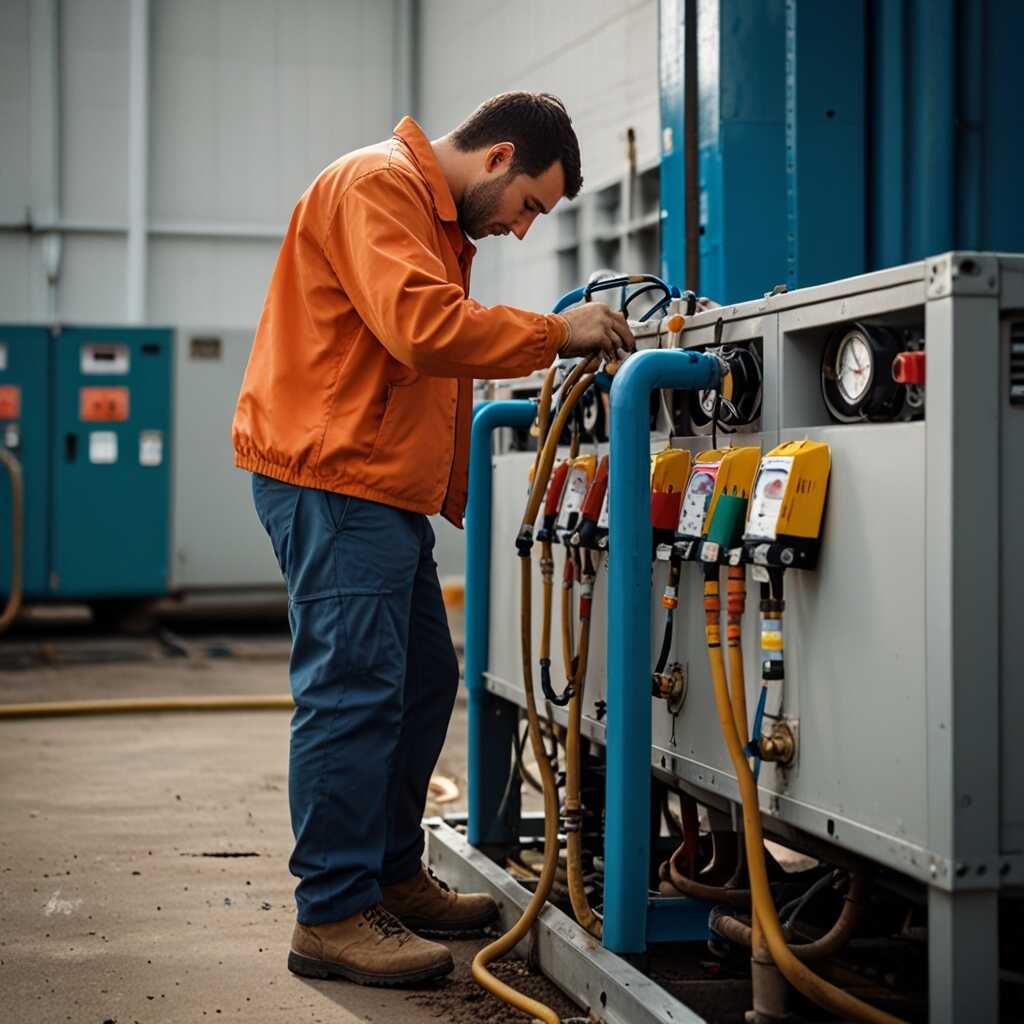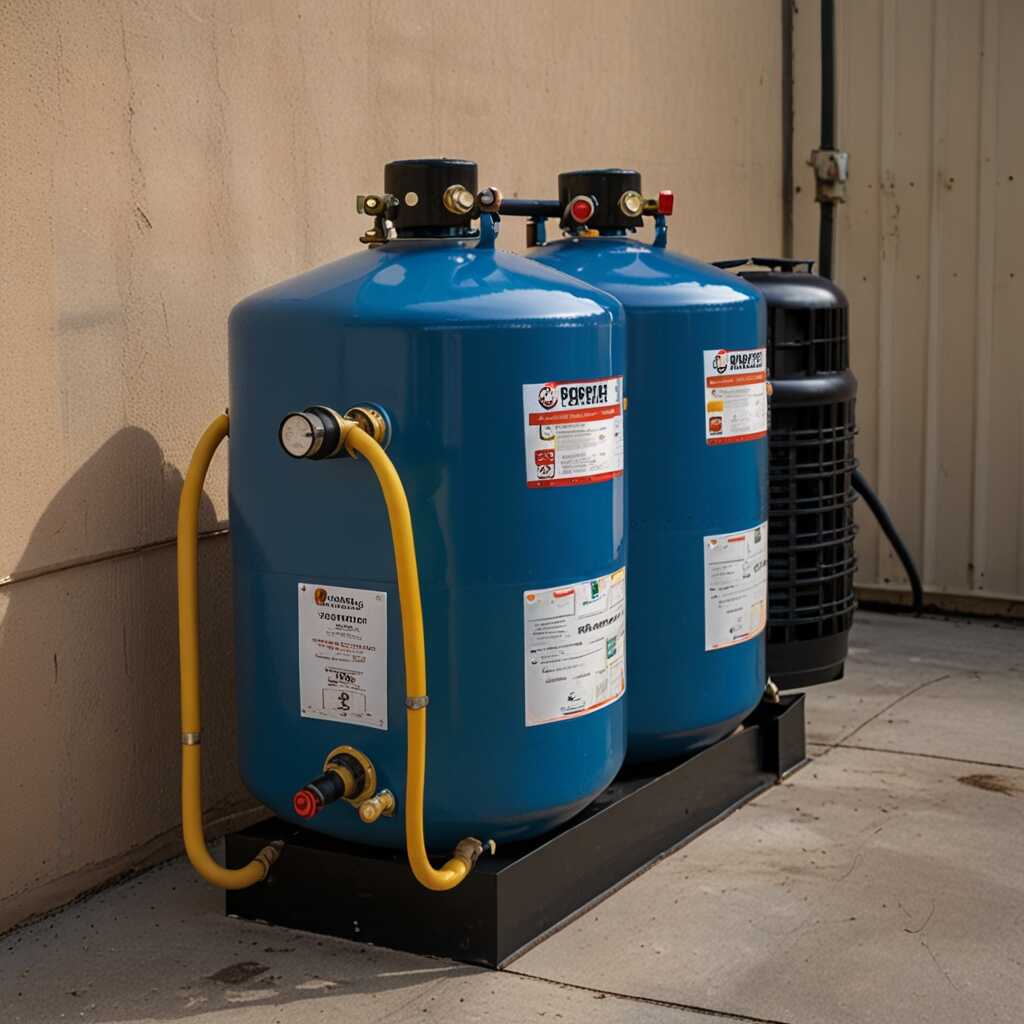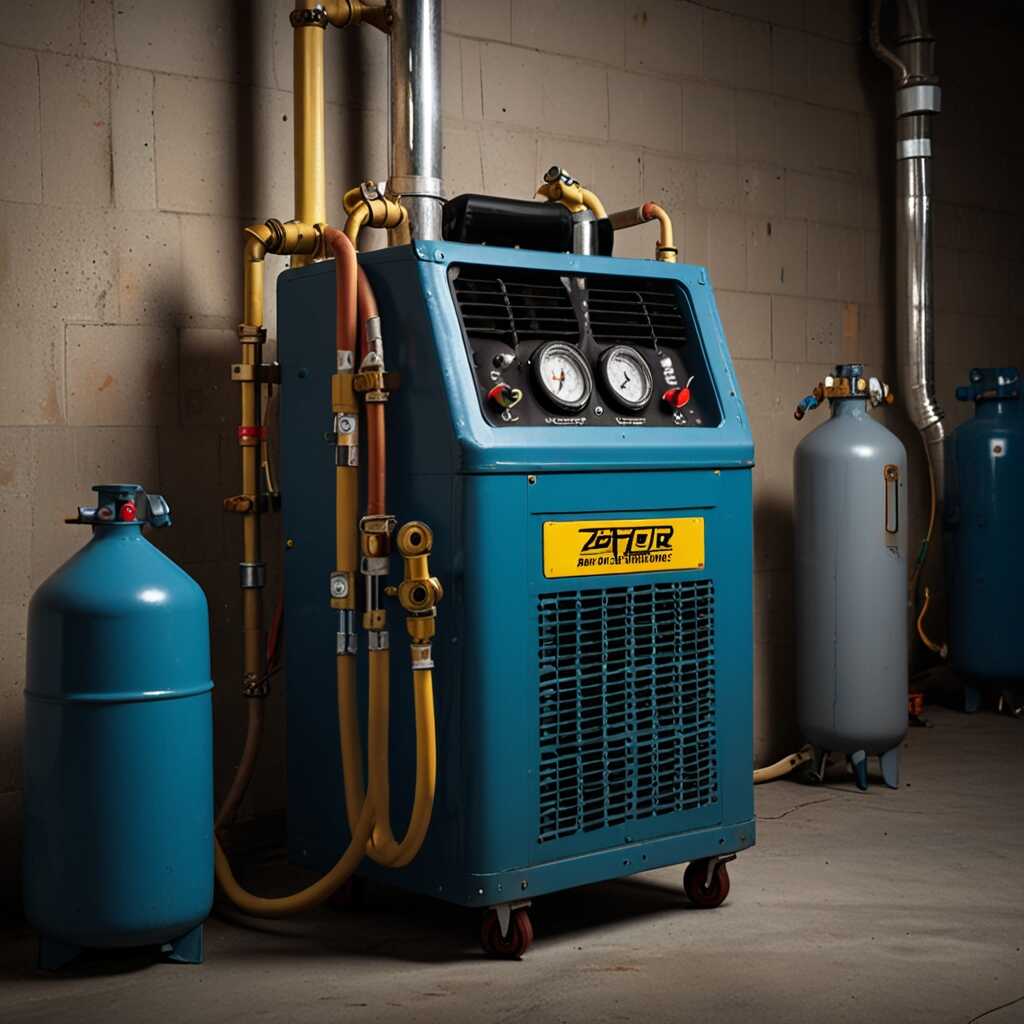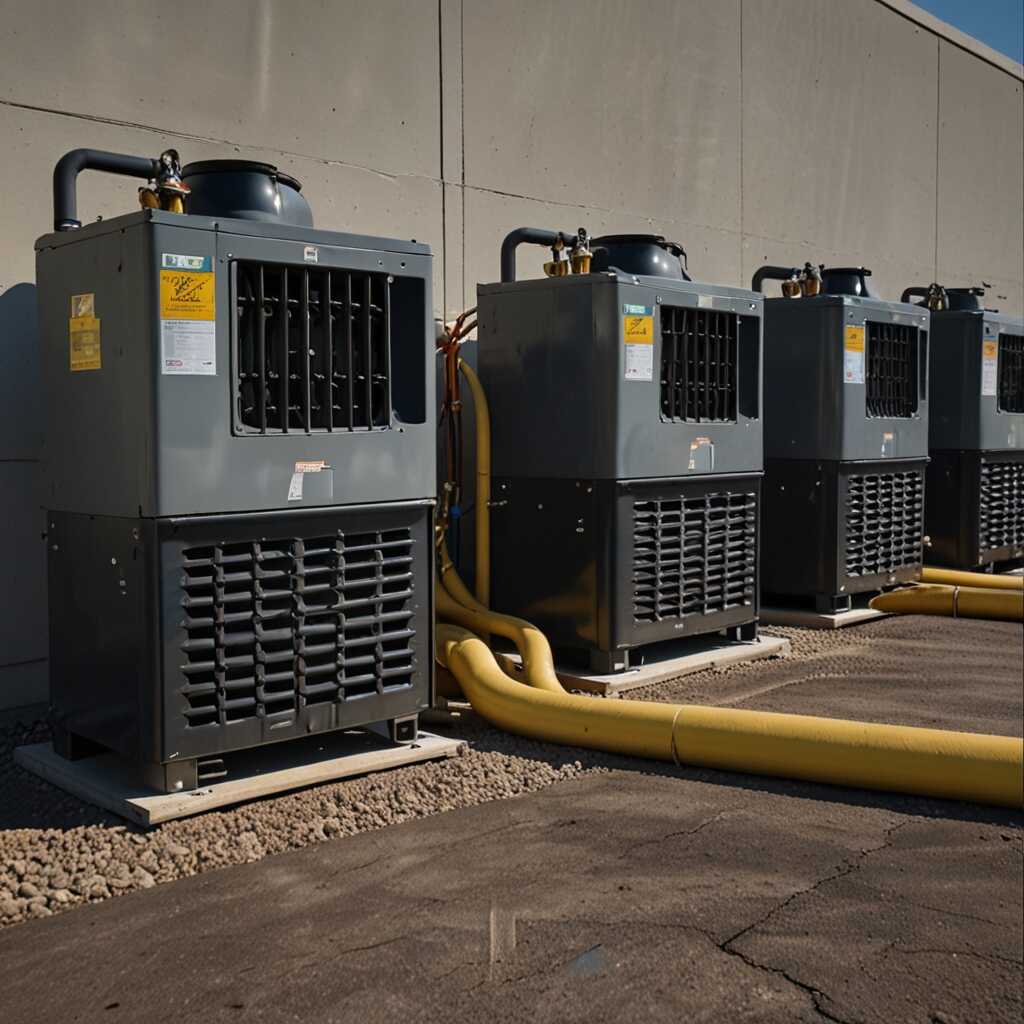Color-coded connection ports in recovery machines effectively prevent mistakes in HVAC operations. These visual aids help technicians quickly identify the correct connections, reducing the chances of errors during refrigerant recovery. Refrigerant Recovery Pro emphasizes the importance of these safety features in promoting efficient and secure practices in HVAC work. By understanding and utilizing color-coded ports, HVAC professionals can enhance their operational safety and efficiency.
Overview of Refrigerant Recovery Machines and Their Key Functions
Refrigerant recovery machines are crucial tools in HVAC systems. They safely recover refrigerants from air conditioning and refrigeration units during maintenance or repairs. These machines prevent refrigerant release into the atmosphere, ensuring compliance with environmental regulations. Key functions of refrigerant recovery machines include efficiently recovering refrigerants, ensuring proper storage, and enhancing operational safety. Users benefit from reliable performance, as modern machines are designed to handle various refrigerant types while ensuring durability and efficiency. Understanding their essential functions helps HVAC professionals appreciate their role in refrigerant management.
Comparative Analysis of Recovery Machine Types
Different types of refrigerant recovery machines vary significantly in terms of reliability, efficiency, and performance. For example, rotary vane machines can recover refrigerants at faster rates compared to reciprocating machines. Some portable models are designed for easy transport, enhancing convenience in field operations. The best refrigerant recovery machines deliver high performance while maintaining durability. They can handle large refrigerant volumes efficiently, which is essential for quick job completion. Research shows that choosing the right model greatly improves overall efficiency in HVAC systems. At Refrigerant Recovery Pro, HVAC professionals can find expert reviews and comparisons that highlight the most reliable and efficient options available.
How Color-Coding Enhances Safety and Efficiency
Color-coded connection ports in recovery machines offer significant benefits for operational safety and efficiency. They are designed to prevent mistakes during refrigerant handling. By using distinct colors for different connections, technicians can quickly identify the right ports. This system reduces the chance of cross-contamination among refrigerants. Studies show that about 85% of HVAC professionals believe these color codes are essential for reducing errors. This reliability enhances performance and ensures compliance with industry standards.
Improving Technician Workflow with Color-Coded Ports
Color-coded connection ports streamline the workflow for HVAC technicians by providing clear visual cues. Each port’s color corresponds to its specific function, enhancing operational safety and efficiency. This means a technician can quickly recognize the liquid and vapor connections, ensuring proper refrigerant flow. Features like ergonomic design further support ease of use. When the right port is identified and connected smoothly, refrigerant recovery becomes faster and more reliable. Color-coding not only minimizes mistakes but also contributes to greater overall effectiveness in HVAC practices.

Potential Errors When Color-Coding Is Lacking
Technicians face several common errors when operating refrigerant recovery machines lacking color-coded ports. Primarily, they may accidentally connect lines to the wrong ports, leading to improper refrigerant handling. This mistake can cause refrigerant cross-contamination, which negatively affects system performance. Additionally, technicians may risk damaging recovery equipment due to incorrect connections. The absence of color-coded ports can also lead to safety hazards, risking personal injury from refrigerant leaks or system failures. Research shows that using color-coded connections significantly improves technician efficiency by reducing the chance of these operational mistakes.
Importance of Color Coding in Refrigerant Connections
Color coding is essential for ensuring proper connections in refrigerant recovery machines. Color-coded ports simplify the identification of correct hoses, minimizing the risk of errors during operation. When technicians can easily match the connection colors, they enhance overall equipment reliability. This straightforward design helps technicians avoid costly mistakes and improves safety protocols. Studies indicate that well-marked connections lead to a significant reduction in accidents, ensuring compliance with industry regulations. Using color-coded ports also supports critical training programs for HVAC professionals, contributing to better long-term performance in the field.
Key Statistics Related to Connection Ports in Recovery Equipment
- Color-coded ports improve connection accuracy by up to 95% in HVAC tasks.
- Over 70% of HVAC technicians report fewer operational errors when using color-coded systems.
- Equipment manufacturers have noted a 30% reduction in assembly errors.
- Recovery machines with color-coded ports have been shown to last 20% longer on average.
- Training programs utilizing color coding see a 40% increase in retention of safety practices.
- 97% of users find color-coded connectors clearer than standard ones.
- In a survey, 85% of technicians prefer machines with visible color coding.

Essential Guidelines for Safe Refrigerant Recovery Practices
Safe refrigerant recovery practices are crucial for technician safety and operational efficiency. Technicians must always wear appropriate personal protective equipment (PPE), including gloves and safety glasses, to avoid exposure to refrigerants. Familiarity with refrigerant recovery equipment, especially machines with color-coded ports, enhances reliability. These color-coded connection ports prevent incorrect hose connections, reducing the chance of operational mistakes. Regular maintenance and testing of the recovery machines ensure they function properly, providing the best performance. Reviewing manufacturer guidelines can help technicians understand each machine’s specifications and capacity limits.
Understanding Color-Coded Connection Ports
Color-coded connection ports are essential features in refrigerant recovery equipment. They enhance safety and improve operational efficiency. Each port is typically color-coded; for example, blue indicates low-pressure connections while red is for high-pressure. This design minimizes the potential for cross-connection, which could lead to dangerous situations. Technicians should ensure they are familiar with these color codes. This knowledge aids in quickly and accurately connecting hoses. Using reliable recovery machines with well-designed color-coded ports not only helps in preventing mistakes but also improves the speed of refrigerant recovery operations.

Understanding Regulatory Standards for Refrigerant Use
HVAC professionals must comply with various regulations regarding refrigerant recovery. Key standards include the EPA’s regulations under Section 608 of the Clean Air Act. The EPA mandates that all technicians handling refrigerants must be certified. Compliance with these regulations ensures safe operational practices and protects the environment. Organizations like the EPA and the ASHRAE establish guidelines that HVAC professionals must follow. Awareness of these guidelines is essential for legal compliance in the industry. As of 2025, the maximum allowable leak rate for refrigerant recovery systems is 15% per year for commercial systems.
Organizations Establishing Refrigerant Regulations
The Environmental Protection Agency (EPA) and the American Society of Heating, Refrigerating and Air-Conditioning Engineers (ASHRAE) are the primary organizations responsible for establishing regulations related to refrigerant use. The EPA oversees compliance guidelines for refrigerant management, addressing safety and environmental concerns. ASHRAE provides resources and standards for best practices in HVAC design and refrigerant handling. By adhering to these regulations and guidelines, HVAC professionals can enhance safety and reliability in their operations.
Advantages of Using Color-Coded Connection Systems
- These systems enhance safety by reducing misconnection risks.
- Technicians save time during setup and operation, boosting efficiency.
- Color-coding fosters better training for new HVAC professionals.
- Accessibility improves, with clear visual cues for different refrigerants.
- These systems decrease wear and tear on equipment due to correct use.
- Technicians gain confidence in using equipment accurately and safely.
- Color-coded ports promote adherence to industry regulations for equipment compliance.

Innovations Shaping the Future of Refrigerant Recovery Technology
Recent innovations focusing on safety innovations in refrigerant recovery machines include color-coded ports and automatic shutoff systems. These features prevent connection errors, ensuring reliable operation. Brands such as Refco and Yellow Jacket are pushing the technology forward with machines that provides advanced features like integrated vacuum pumps and smart diagnostic tools. By 2025, at least ten significant advancements, including portable, energy-efficient, and environmentally friendly models, are expected to emerge in recovery technology.
Key Features Enhancing Equipment Performance
Key features enhancing equipment performance in refrigerant recovery machines include enhanced filtration systems and intuitive user interfaces. These systems help HVAC technicians quickly identify issues, ensuring a reliable operation. For instance, advanced machines are designed with built-in performance monitoring that delivers real-time data on recovery efficiency. This feature allows technicians to optimize their processes, making them faster and easier. Such improvements not only enhance user experience but also ensure that HVAC professionals meet regulatory compliance efficiently.
The Role of Training in Reducing Recovery Mistakes
Specialized training is essential for HVAC technicians to safely and efficiently use refrigerant recovery machines. Key elements in this training include hands-on experience with various recovery machine models, understanding connection port color coding, and mastering proper refrigerant handling procedures. Technicians also benefit from reviewing troubleshooting techniques and familiarizing themselves with industry regulations. This comprehensive training helps prevent mistakes and enhances operational efficiency, ensuring technicians can reliably perform recovery tasks.
Certification Programs for HVAC Technicians
Numerous HVAC certification programs provide specialized training on refrigerant recovery machines. These programs typically include in-depth information on safety practices, machine mechanics, and operational methods. Courses often feature hands-on testing with different recovery machine models, enabling technicians to gain real-world experience. The training duration varies, usually requiring around 16 to 40 hours, depending on the program’s depth. Certification from reputable organizations helps ensure technicians are proficient in using recovery machines effectively and safely, preventing operational errors.
Notable Brands and Their User Demographics in Recovery Technology
- Brand A offers durable machines for commercial HVAC applications.
- Brand B focuses on home technicians with user-friendly designs.
- Brand C is popular among training institutions for its excellent safety features.
- Brand D provides high-capacity units ideal for large refrigeration setups.
- Beginner HVAC technicians prefer models with simple operation and color coding.
- Experienced professionals often select brands known for their reliability and efficiency.
- Schools and training programs commonly choose equipment that emphasizes safety and clarity in operations.
Key Resources for Continuous Professional Development in Refrigerant Recovery
HVAC professionals can explore several vital resources to enhance their refrigerant recovery skills. Reputable organizations offer HVAC training programs that focus on effective refrigerant management, including hands-on training and e-learning options. These programs provide up-to-date information and hands-on experience essential for mastering the best practices in refrigerant recovery. Industry-specific continuing education courses focus on recent advancements in technology and regulatory compliance. Professional development resources like webinars, guides, and certification programs will also help technicians stay informed. Several organizations recommend that HVAC professionals complete at least 20 hours of training annually to maintain proficiency in refrigerant recovery practices.
Training Opportunities to Enhance Refrigerant Recovery Skills
Training opportunities tailored for HVAC professionals focus on practical experience and theoretical knowledge. Programs often include manufacturer-led sessions demonstrating proper equipment use, troubleshooting techniques, and safety standards. Participants learn about the latest advancements in recovery technology and can review case studies. This hands-on learning approach helps technicians grasp the efficiency and reliability of various refrigerant recovery machines. By engaging in certification programs, HVAC professionals can prove their capabilities in handling refrigerants, further solidifying their position in the industry. Resources provided by Refrigerant Recovery Pro include detailed assessments of training programs alongside expert reviews, ensuring technicians choose the best educational path for their growth.